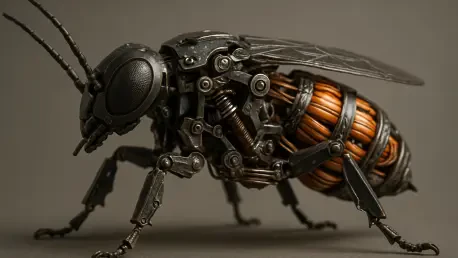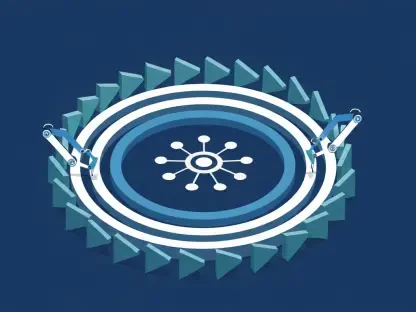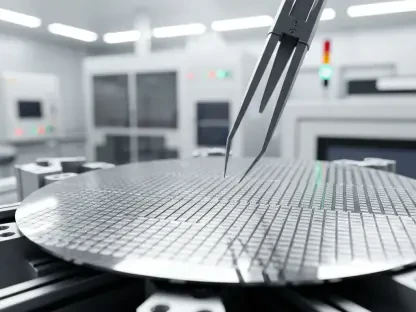Welcome to an exciting conversation with Oscar Vail, a renowned technology expert whose innovative work sits at the intersection of robotics, quantum computing, and open-source initiatives. Today, we dive into his groundbreaking research on muscle-inspired mechanisms for tiny autonomous insect robots. This interview explores the fascinating intersection of nature and technology, focusing on how biological systems like mollusk muscles have inspired a new era of soft robotics. We’ll discuss the challenges of creating powerful actuators for small-scale robots, the incredible durability and versatility of these new mechanisms, and the potential real-world applications that could transform fields like search-and-rescue. Let’s get started!
Can you tell us what sparked the idea to draw inspiration from mollusk catch muscles for designing robotic mechanisms?
Absolutely. Mollusks, like clams and mussels, have this incredible ability to hold their shells closed for long periods with minimal energy expenditure. That efficiency caught our attention. Nature has optimized these systems over millions of years, so we saw an opportunity to mimic that “catch” mechanism—a bistable state where they lock into position without constant power. It’s a perfect blueprint for tiny robots where energy efficiency is critical. We started brainstorming how to translate that biological concept into a synthetic system, and it led us down a path of combining soft materials with electromagnetic principles.
What specific traits of mollusk muscles made them so appealing for this project?
The standout feature is their energy efficiency. Mollusk catch muscles can maintain a contracted state without burning through energy, unlike human muscles that tire out. They achieve this through a unique structural arrangement that acts like a natural latch. For robotics, especially at the insect scale, this means we can create actuators that don’t drain batteries quickly while holding a position. Additionally, their soft, flexible nature inspired us to move away from rigid components, allowing for more adaptive and resilient designs that can handle varied terrains.
Could you break down the muscle-inspired elasto-electromagnetic mechanism and explain how it functions in simple terms?
Sure, I’ll keep it straightforward. Our elasto-electromagnetic, or EEM, mechanism is essentially a soft, stretchy material combined with an electrical coil and tiny magnets. The soft polymer acts like the muscle tissue, deforming and returning to shape as needed. When we pass a low-voltage current through the coil, it interacts with the magnets to create motion—think of it as a push or pull effect. What’s really cool is that it can lock into position without continuous power, just like a mollusk muscle, thanks to the elastic design. This saves energy and makes it ideal for tiny robots that need to operate for extended periods.
Why has creating powerful actuators for small-scale robots been such a tough challenge historically?
The main issue is scaling down traditional motors. Rigid motors, which work fine in larger robots, become incredibly fragile and inefficient at smaller sizes. They break easily under stress, and their power output drops significantly. Plus, they often require complex gearing systems that add weight and bulk—totally impractical for insect-sized robots. Energy consumption is another hurdle; tiny batteries can’t sustain the constant draw of conventional actuators. It’s been a long-standing puzzle to balance power, durability, and efficiency at this scale, which is why we had to rethink the entire approach with soft, bio-inspired materials.
How does your new mechanism address these long-standing issues in small-scale robotics?
Our EEM mechanism flips the script by using soft, flexible materials instead of rigid components. This makes it inherently more durable and adaptable, able to withstand impacts and repeated motions without breaking. It’s also much more energy-efficient because of the bistable state I mentioned earlier—holding position without constant power. Compared to older designs, it delivers comparable force with less energy and at a fraction of the size, opening up possibilities for truly autonomous tiny robots that can operate in real-world conditions without frequent recharging or repairs.
Speaking of durability, can you share how you tested the resilience of these actuators?
We put them through some pretty intense tests to mimic real-world challenges. For endurance, we cycled them through millions of movements to see if they’d wear out—think of it as simulating years of use in a short time. They held up remarkably well. We also tested impact resistance by dropping them from heights up to 30 meters. That’s like a fall from a nine-story building, and they survived without significant damage. These tests showed us that the soft, elastic nature of the material absorbs shocks and stresses far better than traditional rigid actuators.
Let’s talk about the insect-sized robots you built with these actuators. How did they perform in real-world environments?
The performance was beyond exciting. We tested these little robots across a variety of surfaces and settings—rough stone, soil, glass, even water. They crawled, swam, and jumped autonomously, navigating obstacle courses we designed to challenge their agility and sensing capabilities. For instance, in aquatic tests, we took them from controlled lab tanks to a real river environment, and they managed to swim against mild currents. On land, they tackled uneven terrain without getting stuck, which was a huge win. It really showcased how versatile and robust the actuators are in unpredictable conditions.
Were there any unexpected moments or behaviors during these tests that stood out to you?
Oh, definitely. One surprising moment was during a river test when one of the swimming robots adapted to a small eddy in the current. It wasn’t something we explicitly programmed, but the flexibility of the actuators allowed it to adjust its motion on the fly. That kind of emergent behavior was thrilling to see because it hints at the potential for these robots to handle complex, dynamic environments without needing constant human input. We also noticed that their jumping ability on rough surfaces sometimes exceeded our predictions, which opened up new ideas for future designs.
Your research points to applications like search-and-rescue operations. How do you envision these tiny robots making a difference in such scenarios?
Search-and-rescue is a perfect fit for these robots because they can access areas that are too dangerous or tight for humans or larger machines. Imagine a collapsed building after an earthquake—these tiny bots could crawl through rubble, swim through flooded sections, and jump over obstacles to locate survivors or deliver small sensors. Their autonomy and durability mean they can operate for hours without needing a recharge, providing real-time data to rescue teams. Beyond that, their small size makes them discreet, which could be useful for detecting critical signals or hazards without drawing attention in sensitive situations.
Looking ahead, what’s your forecast for the future of soft robotics and these muscle-inspired technologies?
I’m incredibly optimistic about where soft robotics is headed. With muscle-inspired technologies like our EEM mechanism, I think we’ll see a wave of tiny, autonomous systems that blur the line between biology and engineering. In the next decade, I predict these robots will become commonplace in fields like disaster response, environmental monitoring, and even minimally invasive medicine—think micro-bots performing surgeries inside the body. The key will be refining energy efficiency and integrating smarter sensors and AI to make them even more independent. It’s an exciting time, and I believe we’re just scratching the surface of what’s possible with nature-inspired designs.









